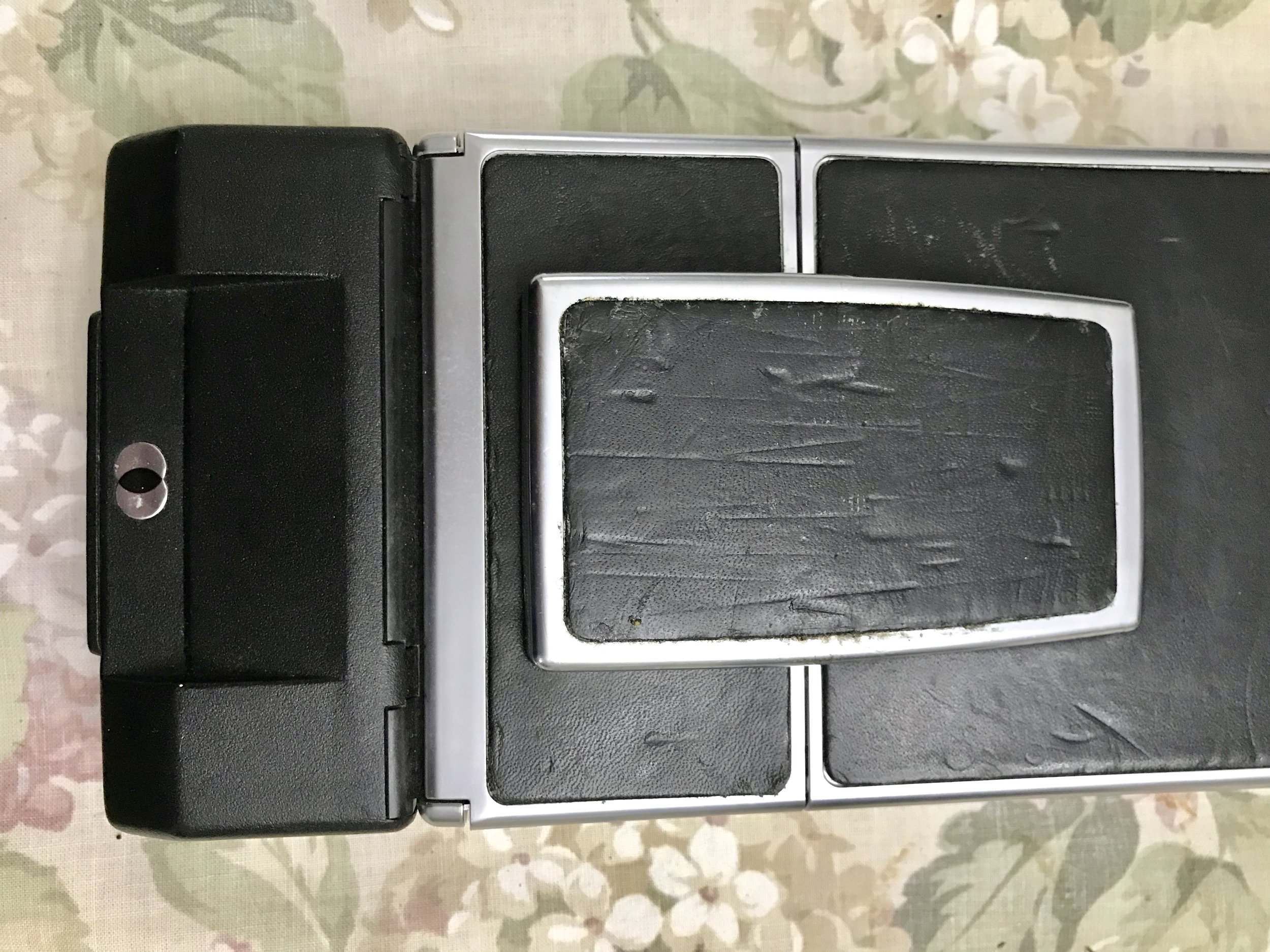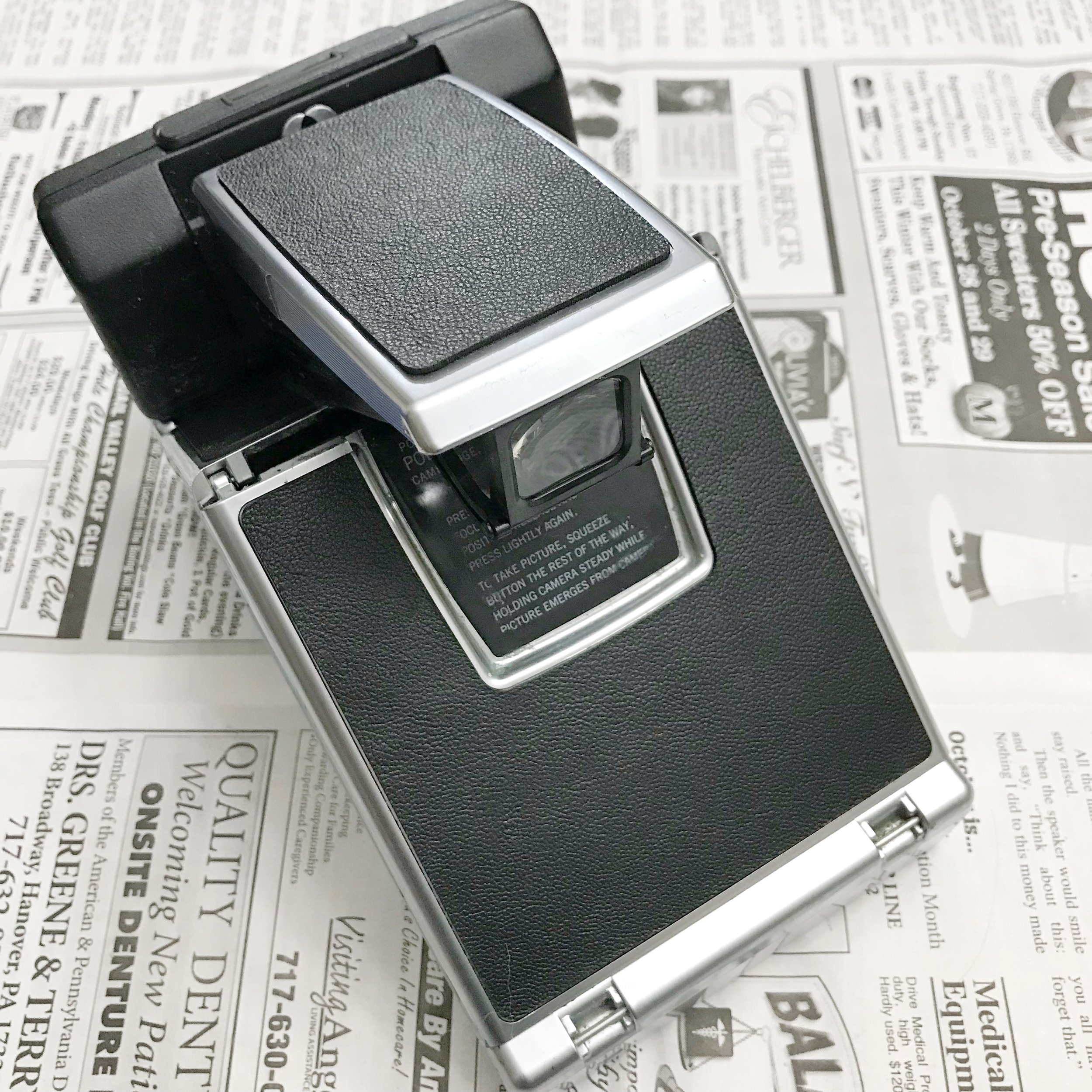Check out the t-shirts with my cartoon Photo Skully on the front! Get yours now at Threadless.com!
tintype effect on instax film
My process for making tintype effect on Instax film with iPhone apps and Fujifilm SQ10 Instax Square camera. The Tintype iPhone app converts regular iPhone photos to tintype images in either a square or rectangular format. There are various settings in the app for black and white, sepia, or color, with or without frame, eyes in portraits, depth of field and grain effect. The other app that can be used is the Hipstamatic app that uses a combination of the Tinto 1884 lens and D-Type film, but only saves in the square format. After the photos are saved to the iPhone camera roll, I transfer them to the micro-sd card for the SQ10 Instax Square camera using a lightning port micro-sd card reader. The photos can then be printed from the SQ10 Instax Square camera. I have sometimes used the sepia filter to get a warmer print. These could probably also be printed on a SP-3 Mobile Instax Printer, but I don’t own one of those to try it out.
I’ve also printed the tintype effect photos on the Kiipix Instax Mini printer using the rectangular shaped photos from the Tintype app. This works really well for antique cars, old machinery, or anything that would look good with a vintage photo treatment.
Polaroid SX-70 Sonar Reskin
My trusty Polaroid SX-70 Sonar was a little beaten up when I bought it off of Amazon a few years ago and was in need of a new leather reskin. With the new lower price of SX-70 film available from Polaroid Originals, I have a new fondness for the Sonar. The camera works well, but the leather had scratches and dents, so it was time to give it a fresh look. I was originally going to send the camera to an online shop to be refurbished and reskinned, but my wallet said I needed to tackle this job myself.
I found a very helpful video on YouTube by Analog Things on how to remove the old leather and started gathering what I needed to get started. I went to HugoStudo.com to find a nice selection of SX-70 skins to choose from, thinking that I would give the old sonar some bling with a color skin. But I eventually decided on a $20 classic black leather skin to restore it to it's original look. The skins are made to fit your specific SX-70 model and have adhesive on the back for easy installation.
I used cotton swabs, nail polish remover, a small bottle of low odor paint thinner, a utility knife, an x-acto knife, and some elbow grease. Removing the old leather and putting on the new skin took about two hours and looked so good that it now needed a classic leather SX-70 camera strap to complete the makeover. I picked up a black Impossible SX-70 strap from Focus camera for $19.99 with free shipping. B and H Photo had a used Mint SX-70 lens adaptor set for $59.95 that included a ND filter, close up lens, fisheye lens, and a couple of other filters, for about half the price of a new one, so I ordered that. I've been thinking about getting the Mint flash bar as well, but I might pick up one of the vintage SX-70 electronic flash attachments instead for a fraction of the cost from ebay.
So far, I've upgraded my Polaroid SX-70 Sonar for about a $100, with the flash attachment likely to cost an additional $27. The success of this project lead me to purchase a sorry looking Polaroid SX-70 Model 3 from ebay for a few dollars which will be my next camera restoration project.
Polaroid 110A/Instax Wide Conversion Project
I recently joined the Worldwide Instax Shooters group on Facebook and was inspired to attempt a Polaroid 110A conversion project. There was a post about a Polaroid 110A/B conversion where a hacked Instax 210 Wide camera was attached to the back of the Polaroid to take advantage of the professional quality lens on the camera.
I searched Craigslist and came up with this very nice condition Polaroid 110A with a Rodenstock Ysarex 127mm lens, only the shutter is a little sticky, possibly requiring a disassembly and cleaning. I've been searching the interwebs and reading as much as I can to get information on how I can do this and also the conversion project on my own.
I will need to gather a few items, such as a lens spanner tool, Ronsinol or denatured alchohol, and a healthy dose of confidence to tackle this project, probably sometime this fall and winter. For the Polaroid 110A/Instax Wide conversion I will need a donor Instax 210 Wide camera. Though I have one already, I would prefer to get another one as the one I have is in perfectly good condition to continue using.
Look for future posts about the project as I go along.



















